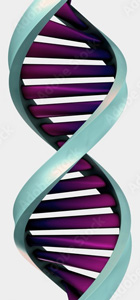by Julie Dohr, MD
 Everyone has heard of the blood test that can tell the gender of the baby in the first trimester, but what does it really test for?
Everyone has heard of the blood test that can tell the gender of the baby in the first trimester, but what does it really test for?
Non-invasive prenatal testing, also called Cell-Free DNA testing, is a blood test that can be performed in the first trimester of pregnancy. It looks for small fragments of DNA from the baby circulating in the mother’s blood stream.
That DNA can give accurate information about the chromosomal make-up of the baby. Does the baby have the correct number of chromosomes? The most common abnormalities that it tests for are Trisomy 21 (Down Syndrome), Trisomy 18 (Edwards Syndrome), Trisomy 13 (Patau Syndrome) and Monosomy x (Turner Syndrome).
 Is it accurate? Yes 90-99% accurate for these abnormalities, but not 100%! The risk of false positive is 1%
Is it accurate? Yes 90-99% accurate for these abnormalities, but not 100%! The risk of false positive is 1%
What is a false positive test? When the test says something is wrong with the chromosomal make-up of the baby, but there really is not.
When can you do it? We recommend having the test performed between 11-13 weeks. It can occur as early as 10 weeks, but there is a chance that the lab cannot find enough DNA from the baby to run the test that early in pregnancy.
What about microdeletion? This is a new addition to the test, looking for small deletions in chromosomes, which can lead to problems in children when they are born. There are many, many microdeletions but they are rare disorders. This test is not as accurate as these syndromes are rare, and there are more false positives. Sometimes insurance companies do not cover this new addition.
What about twins? The test is not as accurate with twins.

